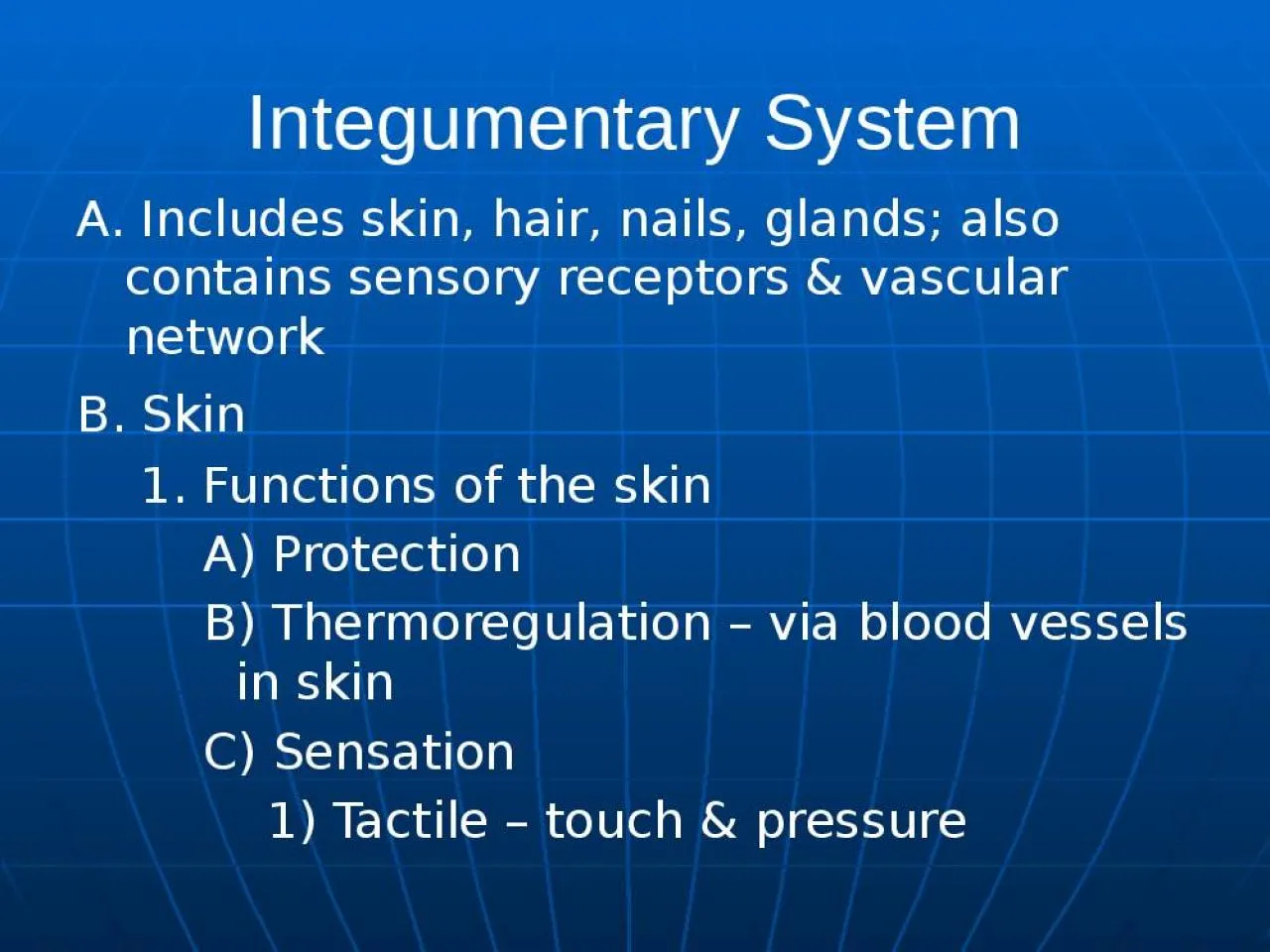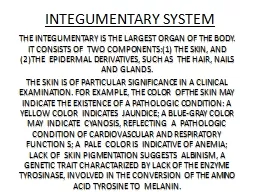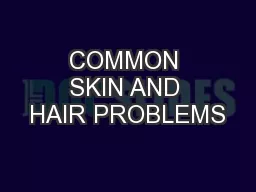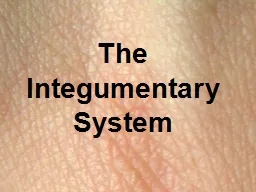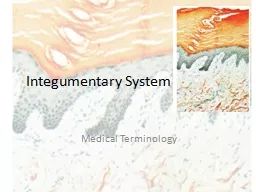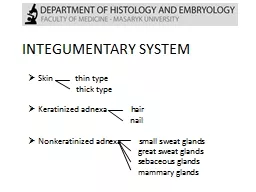PPT-Integumentary System A. Includes skin, hair, nails, glands; also contains sensory receptors
Author : unita | Published Date : 2024-06-12
B Skin 1 Functions of the skin A Protection B Thermoregulation via blood vessels in skin C Sensation 1 Tactile touch amp pressure Integumentary System 2 Thermal
Presentation Embed Code
Download Presentation
Download Presentation The PPT/PDF document "Integumentary System A. Includes skin, h..." is the property of its rightful owner. Permission is granted to download and print the materials on this website for personal, non-commercial use only, and to display it on your personal computer provided you do not modify the materials and that you retain all copyright notices contained in the materials. By downloading content from our website, you accept the terms of this agreement.
Integumentary System A. Includes skin, hair, nails, glands; also contains sensory receptors: Transcript
Download Rules Of Document
"Integumentary System A. Includes skin, hair, nails, glands; also contains sensory receptors"The content belongs to its owner. You may download and print it for personal use, without modification, and keep all copyright notices. By downloading, you agree to these terms.
Related Documents

